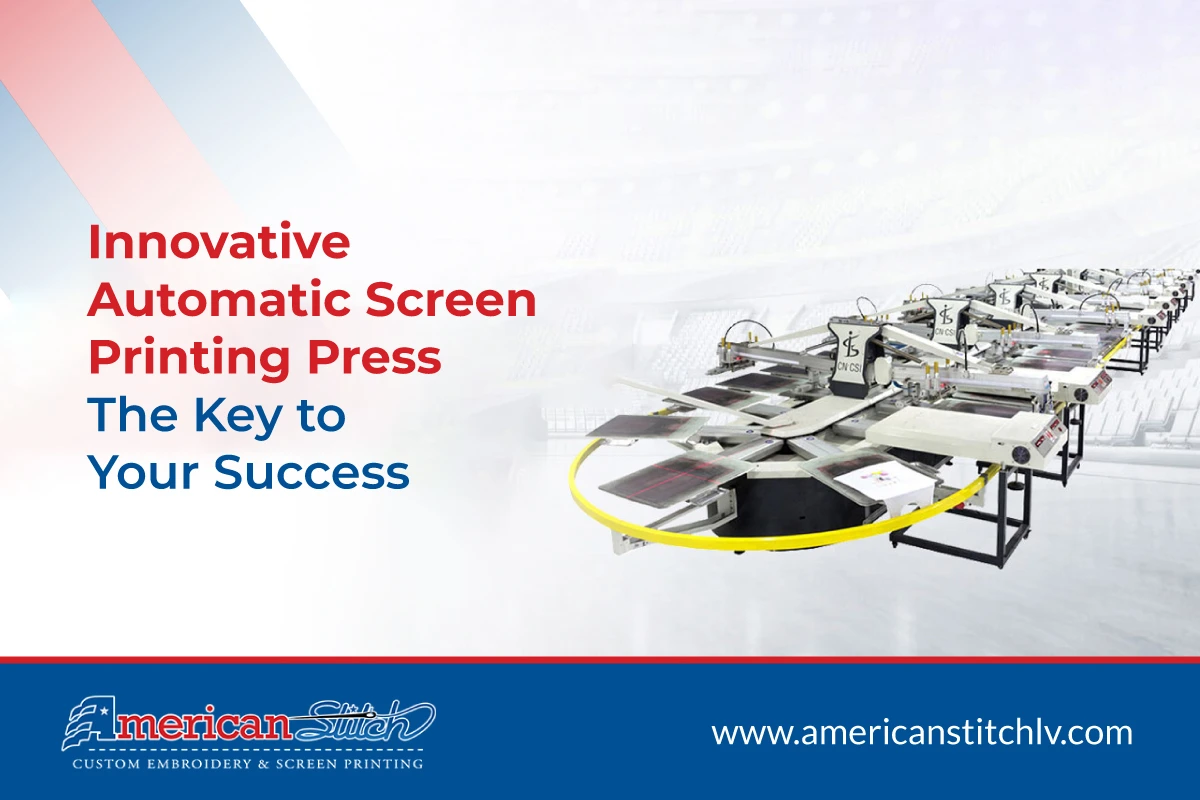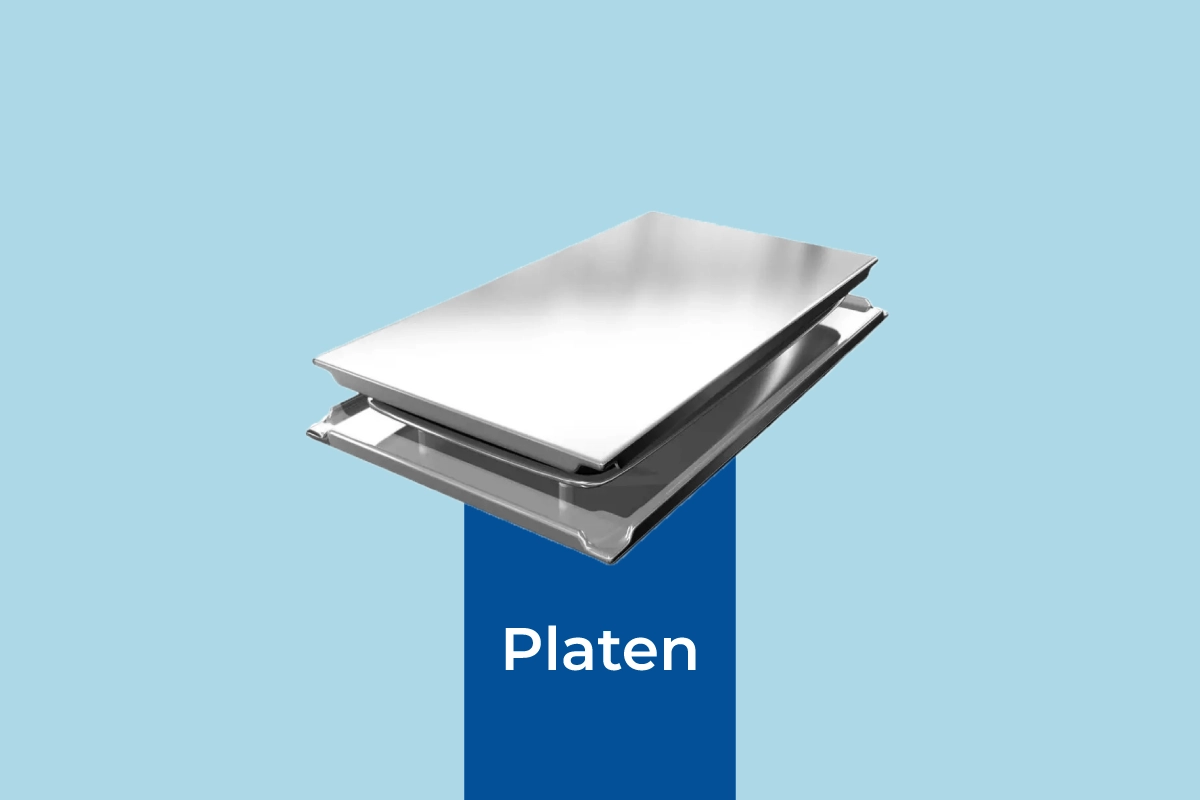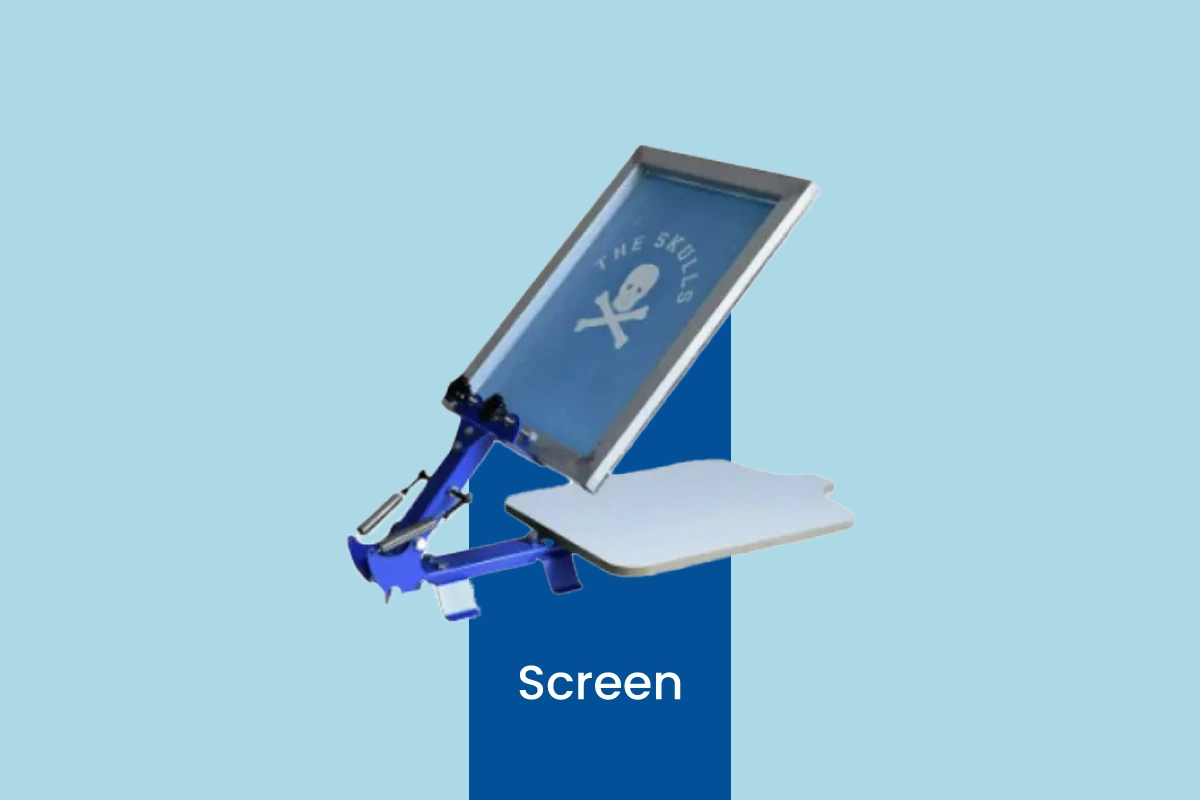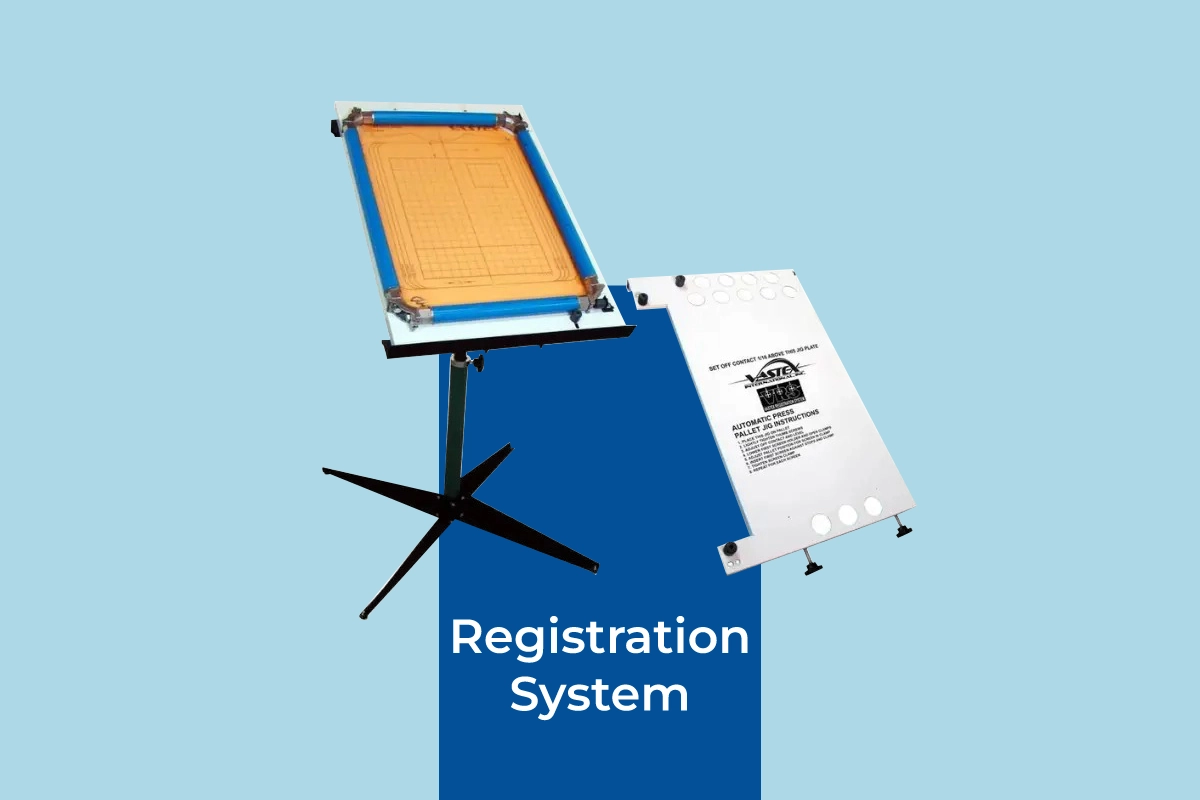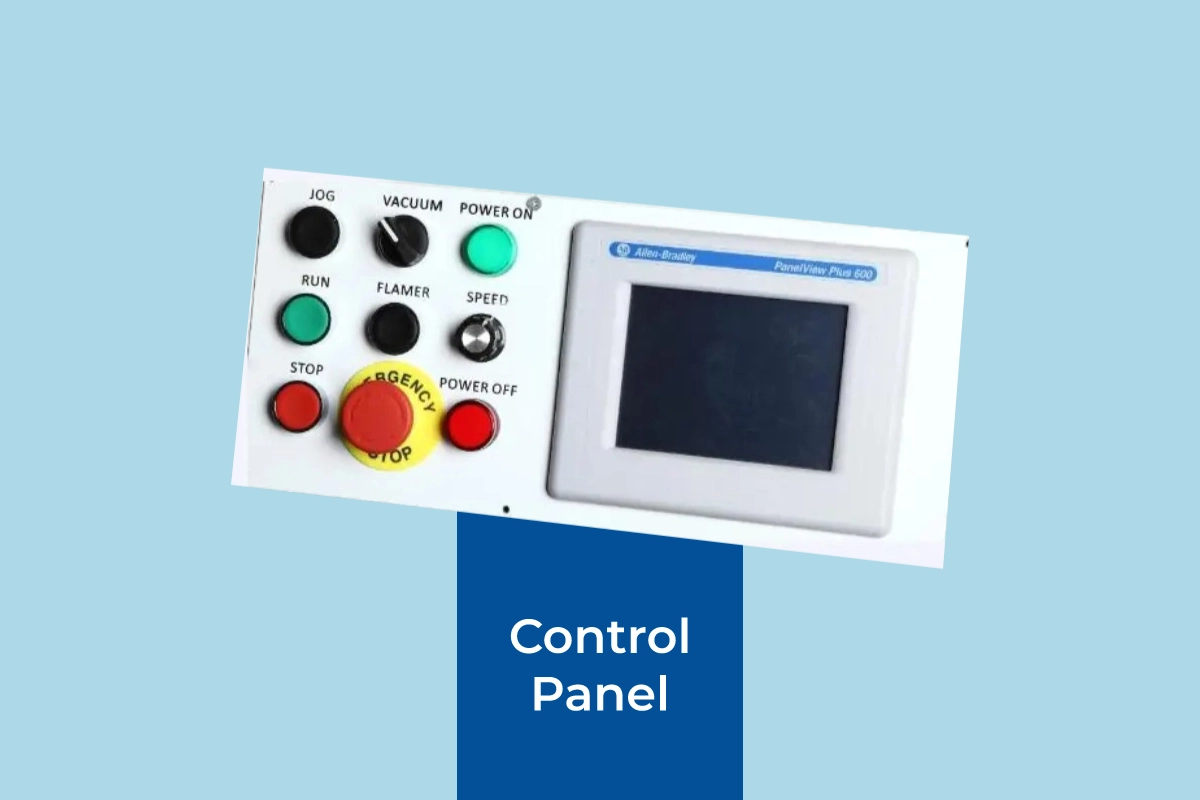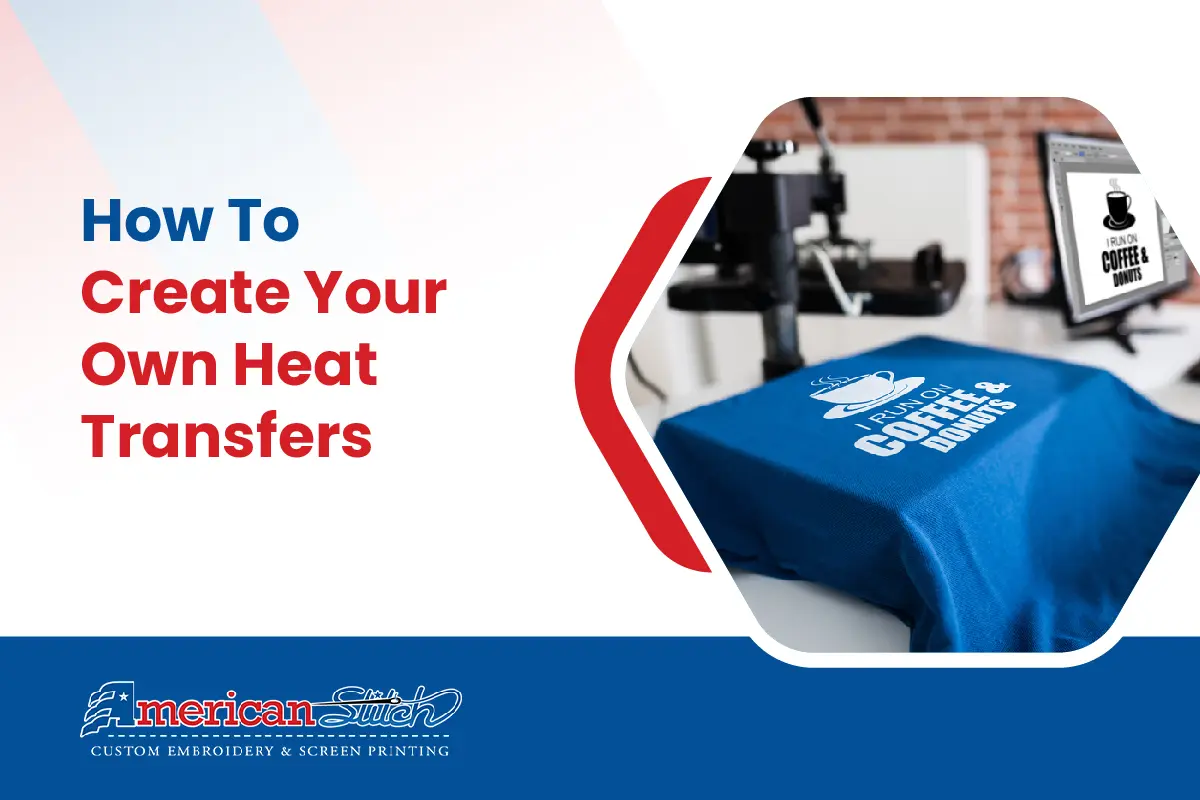Automatic screen printing presses are the most efficient and effective way to print large orders of t-shirts and other apparel. These presses offer a number of benefits, including faster production times, improved accuracy and consistency, and lower cost per unit. Additionally, they are easy to operate and require minimal maintenance.
Table of Contents
What is an Automatic Screen Printing Press?
An automatic screen printing press is a machine used in the process of screen printing, which is a popular printing method for creating high-quality, long-lasting prints on a variety of materials, such as textiles, plastics, metals, and more.
An automatic screen printing press automates the screen printing process, eliminating the need for manual labor and increasing the speed and efficiency of production. The machine typically consists of a flat or cylindrical bed that holds the material to be printed, a set of screens that contain the design to be printed, and a series of squeegees and ink reservoirs that apply the ink to the material.
The automatic screen printing press can be programmed to print multiple colors and designs in a single pass, which is ideal for high-volume production runs. It can also be used to print intricate and detailed designs with precision and accuracy, making it a popular choice for printing logos, graphics, and other artwork on various types of products.

Different Types of Automatic Screen Printing Presses
There are several different types of automatic screen printing presses available, each designed for specific printing applications and production needs. Here are some of the most common types:
- Flatbed Presses: These are the most basic type of automatic screen printing presses, used for printing on flat surfaces like paper, cardboard, and textiles.
- Cylindrical Presses: These are used for printing on cylindrical objects, such as cups, bottles, and tubes.
- Combination Presses: These are versatile machines that can print on both flat and cylindrical surfaces. They’re ideal for businesses that need to print on a wide range of products.
- Textile Presses: These are designed specifically for printing on textiles, such as t-shirts, hoodies, and other apparel items. They usually have multiple platens that allow for printing on multiple items at once.
- Direct-to-Garment (DTG) Presses: These are a type of textile press that uses inkjet technology to print directly onto fabrics. They’re ideal for printing high-quality, full-color designs on t-shirts and other textiles.
- Rotary Presses: These are used for printing large volumes of items, such as yard signs, decals, and other promotional materials. They’re ideal for businesses that need to produce high volumes of printed products quickly and efficiently.
Each type of automatic screen printing press has its own unique features and benefits, and businesses should choose the one that best meets their specific printing needs.
Overview of Technical Components
An automatic screen printing press consists of several technical components that produce high-quality prints efficiently. The platen, screen, squeegee, ink reservoir, R=registration system, flash dryer, and control panel are the main components of automatic printing machines. Here is an overview of some of the main components, Let’s dive in.
Platen
The platen is a fundamental component of an automatic screen printing press. It is a flat or cylindrical surface that holds the item to be printed in place during the printing process. The platen’s shape is determined by the type of printing press used; flatbed presses typically have flat platens, while cylindrical presses have cylindrical platens.
The platen needs to be precisely positioned so that the item being printed is held securely and in the correct position for each pass of the printing process. The operator must adjust the platen to accommodate different-sized items and ensure that the item is level and parallel to the screen. The platen’s surface must be clean and smooth to prevent the ink from bleeding or smudging during the printing process.
Platens can be made from various materials, such as aluminum, stainless steel, or rubber, depending on the type of material being printed and the specific printing press used. Rubber platens are common in textile printing presses because they are soft and flexible, allowing for better ink transfer and preventing damage to the fabric being printed.
Screen
The screen is an essential component of an automatic screen printing press. It is a mesh material stretched over a frame that holds the design being transferred to the item being printed. The mesh material is typically made of polyester or nylon and comes in various mesh counts, which refer to the number of threads per inch. The mesh count used is determined by the design’s complexity and the type of material being printed.
Before printing, the screen is coated with a photosensitive emulsion that hardens when exposed to light. The emulsion is applied evenly to both sides of the screen and left to dry. A film positive of the design is then placed on the emulsion-coated screen and exposed to light, causing the emulsion to harden where the design is located. The unexposed emulsion is then washed away, leaving a stencil of the design on the screen.
Screens can be reused multiple times by cleaning the screen after each print run and applying a new layer of emulsion. However, screens can wear out over time due to the pressure of the squeegee and the exposure to chemicals used in the printing process.
Overall, the screen is a crucial component of an automatic screen printing press, allowing for precise and accurate transfer of the design onto the item being printed.
Squeegee
The squeegee is a critical component of an automatic screen printing press. It is a long, flat blade made of rubber or another flexible material that is used to push ink through the mesh of the screen and onto the item being printed. The squeegee is typically mounted on a carriage that moves back and forth across the screen, applying even pressure to ensure that the ink is transferred uniformly.
The squeegee’s size and shape are determined by the type of printing press used and the size of the item being printed. A larger squeegee is used for larger items, while a smaller squeegee is used for smaller items. The hardness of the squeegee is also important, with softer squeegees used for delicate materials such as textiles, and harder squeegees used for rigid materials such as plastic.
The squeegee must be precisely positioned to ensure that it contacts the screen at the correct angle and applies even pressure across the entire width of the screen. The operator must adjust the squeegee angle, pressure, and speed to achieve the desired level of ink transfer.
Overall, the squeegee is a crucial component of an automatic screen printing press, allowing for precise and even transfer of ink through the screen and onto the item being printed.
Ink Reservoir
The ink reservoir is a component of an automatic screen printing press that holds and dispenses the ink used in the printing process. It is typically located above the screen and is connected to the screen by a series of tubes or hoses. The ink reservoir can be made from various materials such as plastic, metal, or glass, depending on the ink type and the specific printing press used.
The ink reservoir can be pressurized to ensure a consistent flow of ink to the screen. Some automatic screen printing presses use a pneumatic system to pressurize the ink reservoir, while others use a mechanical system.
Overall, the ink reservoir is a crucial component of an automatic screen printing press, allowing for precise and consistent transfer of ink from the reservoir to the screen and onto the item being printed.
Registration System
The registration system is an essential component of an automatic screen printing press that ensures the accurate alignment of the design on the screen with the item being printed. It consists of various components that work together to achieve precise registration, including sensors, micro-adjustments, and mechanical clamps.
The registration system typically uses optical sensors to detect the position of the item being printed and adjust the position of the screen accordingly. The sensors can detect the position of the item based on its edges or other predetermined reference points.
The micro-adjustments allow for precise adjustments to the screen position based on the sensor readings. The operator can make these adjustments manually or using an automated system, such as a motorized control system.
The mechanical clamps hold the screen securely in place, ensuring that it does not move during the printing process. The clamps are adjustable, allowing the operator to position the screen precisely.
The registration system must be calibrated correctly to ensure that the design is aligned accurately on the item being printed. The operator must perform a series of tests to confirm that the registration system is functioning correctly and adjust it as needed.
Flash Dryer
A flash dryer is a critical component of an automatic screen printing press that is used to cure or dry the ink quickly after it is applied to the item being printed. It is typically positioned at the end of the printing press, and the item being printed is passed through the dryer on a conveyor belt.
The flash dryer consists of a heating element and a fan that blows hot air onto the item being printed. The heating element is usually made from ceramic or quartz and can reach temperatures of up to 1000 degrees Fahrenheit. The fan helps to circulate the hot air, ensuring that the ink is cured or dried uniformly.
The flash dryer’s size and configuration are determined by the type of printing press used and the size of the item being printed. A larger flash dryer is used for larger items, while a smaller flash dryer is used for smaller items.
Control Panel
The control panel is an essential component of an automatic screen printing press that allows the operator to control and monitor various aspects of the printing process. It typically consists of a series of buttons, switches, and displays that are used to adjust and monitor the printing press’s settings.
The control panel can be used to adjust the speed of the conveyor belt, the temperature of the flash dryer, the ink flow rate, and other critical settings. The operator can use the panel to set up and save different print jobs, making it easy to switch between different designs and settings.
The control panel can also display important information about the printing process, such as the number of items printed, the ink level in the reservoir, and any errors or issues that may arise. The operator can use this information to troubleshoot any problems quickly and efficiently.
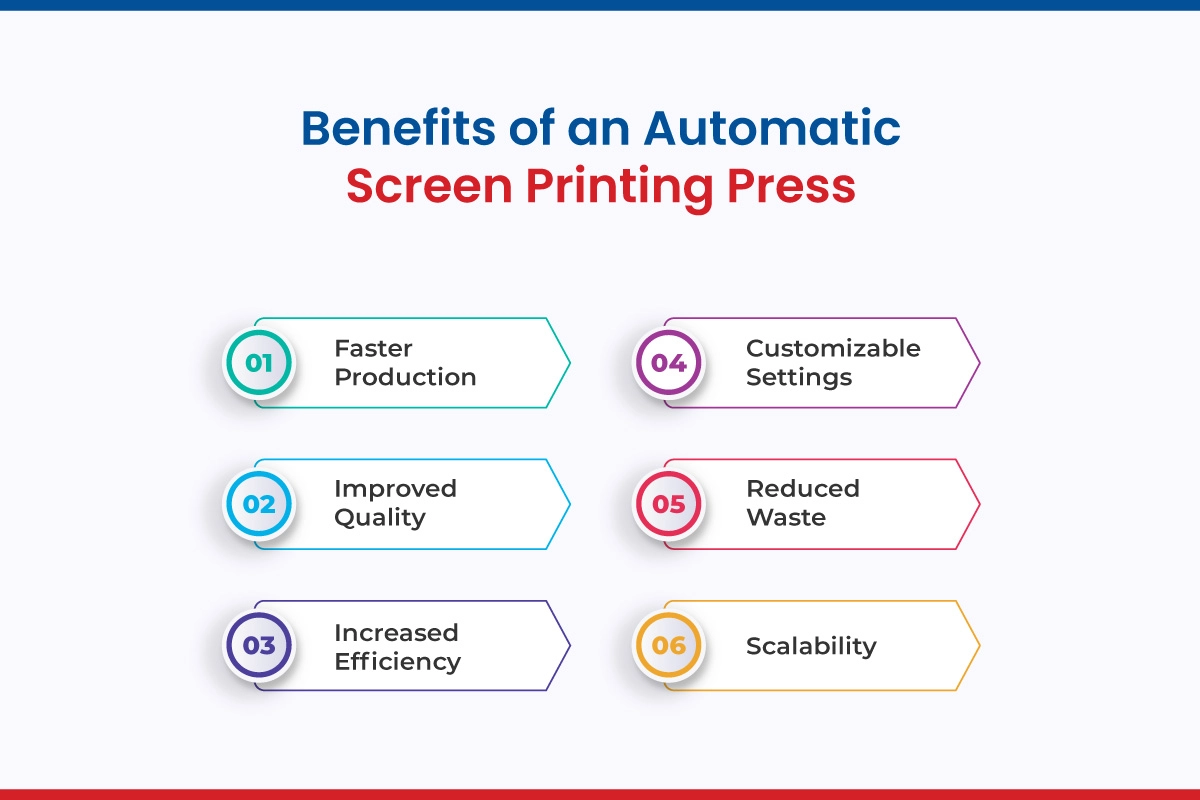
Benefits of an Automatic Screen Printing Press
There are several benefits to using an automatic screen printing press compared to a manual press. Here are some of the most significant advantages:
- Faster Production: An automatic screen printing press can print items much faster than a manual press. This increased speed is due to the automatic operation of the press, which allows it to print multiple items simultaneously and with greater accuracy and consistency.
- Improved Quality: The automatic operation of the press ensures that each item is printed with consistent pressure, ink flow, and registration, resulting in a higher-quality finished product.
- Increased Efficiency: The automatic screen printing press requires less manual labor than a manual press, resulting in increased efficiency and productivity. This increased efficiency can result in lower production costs and higher profits.
- Customizable Settings: The settings on an automatic screen printing press can be easily customized to suit the needs of different print jobs. This customization can include adjusting ink flow rates, print speeds, and print sizes.
- Reduced Waste: The automatic screen printing press can help reduce waste by ensuring that each item is printed accurately and consistently, reducing the need to discard misprinted or defective items.
- Scalability: The automatic screen printing press can be easily scaled up to meet increased demand. This scalability makes it an excellent option for businesses that plan to grow and expand their operations.
Overall, the benefits of an automatic screen printing press make it a valuable investment for businesses that require high-volume and high-quality printing operations.
Operating Principles
The operating principles of an automatic screen printing press are based on a combination of mechanical, electrical, and pneumatic systems. Here is a general overview of how an automatic screen printing press operates:
- Loading the Item: The item to be printed is loaded onto the conveyor belt or other feeding mechanism. The operator may need to adjust the item’s position to ensure proper registration.
- Ink Application: The ink is automatically applied to the screen and then transferred to the item being printed as the squeegee moves across the screen. The ink is typically stored in an ink reservoir, which is fed to the screen through a series of tubes or hoses.
- Curing/Drying: After the ink is applied to the item, it is passed through a flash dryer to cure or dry the ink quickly. The flash dryer typically uses a combination of heat and airflow to ensure that the ink is cured or dried uniformly.
- Unloading the Printed Item: Once the ink is cured or dried, the printed item is automatically unloaded from the conveyor belt or other feeding mechanism.
Throughout the printing process, the automatic screen printing press relies on a variety of sensors, controls, and feedback mechanisms to ensure that each item is printed accurately and consistently. These systems may include sensors to detect the position of the item being printed, controls to adjust ink flow rates and print speeds, and feedback mechanisms to alert the operator to any errors or issues that may arise.
The precise operating principles of an automatic screen printing press can vary depending on the specific make and model of the press. However, the basic principles outlined above provide a general overview of how these presses operate.
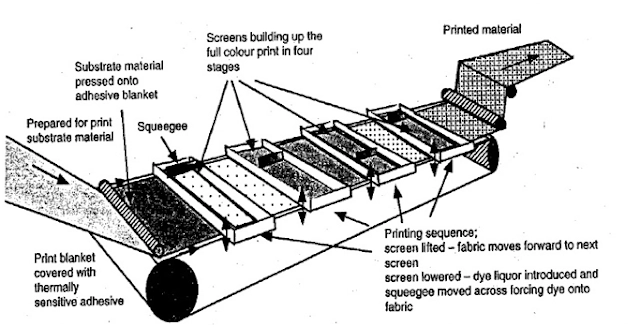
Printing Process
The printing process for an automatic screen printing press involves several steps that work together to create a high-quality printed product. Here is a general overview of the printing process:
- Preparing the Artwork: The artwork to be printed is prepared using computer software, and a stencil or screen is created based on the design.
- Setting up the Press: The automatic screen printing press is set up according to the specifications of the job, including the number of items to be printed, the color of ink to be used, and the size and position of the design.
- Loading the Item: The item to be printed, such as a t-shirt or a piece of paper, is loaded onto the conveyor belt or other feeding mechanism. The item’s position may be adjusted to ensure proper registration.
- Ink Application: The ink is automatically applied to the screen, and the squeegee moves across the screen to transfer the ink to the item being printed. The ink is typically stored in an ink reservoir, which is fed to the screen through a series of tubes or hoses.
- Curing/Drying: After the ink is applied to the item, it is passed through a flash dryer to cure or dry the ink quickly. The flash dryer typically uses a combination of heat and airflow to ensure that the ink is cured or dried uniformly.
- Repeat for Multiple Colors: If the design includes multiple colors, the process is repeated for each color, with the item being passed through the press again for each color.
- Unloading the Printed Item: Once the ink is cured or dried, the printed item is automatically unloaded from the conveyor belt or other feeding mechanism.
Throughout the printing process, the automatic screen printing press relies on a variety of sensors, controls, and feedback mechanisms to ensure that each item is printed accurately and consistently. These systems may include sensors to detect the position of the item being printed, controls to adjust ink flow rates and print speeds, and feedback mechanisms to alert the operator to any errors or issues that may arise.
The precise printing process for an automatic screen printing press can vary depending on the specific make and model of the press. However, the basic steps outlined above provide a general overview of how these presses operate to create high-quality printed products.
Printing Quality
The quality of printing produced by an automatic screen printing press can vary depending on a variety of factors, including the quality of the equipment, the skill and experience of the operator, and the characteristics of the item being printed. However, in general, automatic screen printing presses are capable of producing high-quality prints with sharp lines, vibrant colors, and consistent results.
Factor Number 1
One of the key factors that contributes to printing quality is the accuracy of the registration system. Automatic screen printing presses use a variety of registration systems, including mechanical, optical, and servo-driven systems, to ensure that each color is printed in exactly the right position on the item being printed. A well-calibrated registration system can help to eliminate alignment issues and ensure that each color is printed with precision and accuracy.
Factor Number 2
The type and quality of the ink being used. High-quality inks are formulated to provide vibrant colors and excellent adhesion to a wide range of substrates, while low-quality inks may be prone to bleeding, fading, or cracking over time. Automatic screen printing presses can be calibrated to work with a variety of different ink types and formulations, and the operator can adjust ink flow rates and other settings to optimize the printing quality.
Finally, the quality of the printed product can also be influenced by the design of the item being printed. Certain designs, such as those with fine details or gradients, may be more challenging to print accurately than simpler designs with bolder lines and solid colors. The operator may need to adjust the printing settings or use specialized techniques, such as halftone screens or underbase printing, to achieve the desired results.
Overall, automatic screen printing presses are capable of producing high-quality prints when used properly and maintained regularly. By choosing high-quality equipment, working with skilled operators, and using the right inks and substrates, businesses can achieve excellent printing quality and create products that meet their customers’ expectations.
Potential Challenges of Using an Automatic Screen Printing Press
Automatic screen printing presses can provide numerous benefits in terms of speed, accuracy, and consistency when compared to manual screen printing. However, there are also some potential challenges that you may encounter when using an automatic screen printing press. Here are a few of them:
High Initial Investment Cost
The cost of an automatic screen printing press can vary depending on several factors, including the brand, model, and features of the machine. In general, automatic screen printing presses are much more expensive than manual screen printing equipment.
The cost of an entry-level automatic screen printing press can range from $10,000 to $20,000 while more advanced models can cost upwards of $50,000 or more. Additionally, there may be additional costs associated with maintenance, repairs, and supplies, such as ink, screens, and emulsion.
When considering the cost of an automatic screen printing press, it is important to factor in both the initial investment as well as the ongoing expenses.

Complex Maintenance Requirements
Maintenance is a crucial aspect of ensuring that an automatic screen printing press operates smoothly and produces high-quality prints consistently. Here are some common maintenance tasks that are necessary to keep the machine in good condition:
Regular Cleaning
It is important to clean the machine regularly to remove any dirt, dust, or debris that can build up over time. This can include wiping down the surfaces of the machine, cleaning the ink reservoirs, and clearing any clogs or blockages in the ink lines.
Lubrication
The moving parts of the machine should be lubricated regularly to prevent wear and tear and ensure smooth operation. This can include oiling the drive shafts, bearings, and other mechanical components.
Alignment
The screens, squeegees, and other components of the machine should be aligned properly to ensure accurate prints. It is important to check and adjust the alignment regularly to prevent misaligned prints and other quality issues.
Replacement of Parts
Over time, parts of the machine can wear out and need to be replaced. It is important to keep spare parts on hand and replace any worn or damaged components promptly to prevent further damage to the machine.
Calibration
The machine should be calibrated regularly to ensure that it is operating at optimal levels. This can include adjusting the print speed, pressure, and other settings as needed to achieve the desired print quality.
Regular maintenance of an automatic screen printing press can help to prevent downtime, reduce the risk of costly repairs, and ensure that the machine operates at peak performance for many years.
Machine Size
Automatic screen printing presses are typically larger than manual screen printing equipment, which means they require more space to operate. The exact size of an automatic screen printing press can vary depending on the brand, model, and configuration of the machine. However, they typically require a dedicated workspace with enough room for the machine itself, as well as any ancillary equipment such as drying racks, screens, and ink supplies.
When considering the size of an automatic screen printing press, it is important to consider the size of your workspace and whether it can accommodate the machine. You should measure the available space and compare it to the dimensions of the machine to ensure that there is enough room for the machine to operate safely and efficiently. Additionally, you may need to consider factors such as ventilation, electrical requirements, and access to loading docks or other facilities for shipping and receiving.
It is also worth noting that some manufacturers offer compact or space-saving models of automatic screen printing presses that are designed to fit into smaller workspaces. These machines may have smaller footprints or be designed to operate vertically to conserve space. If you have limited space, it may be worth considering one of these models as an alternative to a larger, more traditional automatic screen printing press.
Learning Curve
While automatic screen printing presses are designed to be user-friendly, there is still a learning curve involved in mastering the operation of the machine. This can take time and effort to get used to, especially if you are not familiar with screen printing technology. Here are some common challenges that you may encounter when learning how to operate an automatic screen printing press:
Software
Many modern automatic screen printing presses use software to control the machine, adjust print settings, and monitor progress. Learning how to use this software can take time and may require some technical knowledge.
Setup
Setting up the machine for a print run can be a complex process that requires attention to detail and careful calibration of the various components. This can involve adjusting the screens, squeegees, ink, and other factors to achieve the desired print quality.
Troubleshooting
Like any complex machinery, automatic screen printing presses can encounter issues from time to time. Learning how to troubleshoot common problems, such as misaligned prints or ink flow issues, can take time and require some troubleshooting skills.
Maintenance
As discussed earlier, regular maintenance is crucial for ensuring that an automatic screen printing press operates smoothly and produces high-quality prints. Learning how to perform routine maintenance tasks, such as cleaning and lubrication, is an important part of operating the machine.
Overall, the learning curve for operating an automatic screen printing press can be steep, especially for those who are new to the technology. However, with patience, practice, and a willingness to learn, it is possible to master the operation of the machine and enjoy the benefits of increased production speed, accuracy, and consistency. Many manufacturers offer training and support resources to help users get up to speed quickly and efficiently.
Customization
Automatic screen printing presses are often designed for high-volume printing, which can make it difficult to produce customized prints or small print runs. This can be a challenge for businesses that specialize in custom or one-off prints.
Overall, automatic screen printing presses can be a valuable investment for businesses looking to increase their production capacity and efficiency. However, it is important to carefully consider the potential challenges and limitations of these machines before making a purchase.
Conclusion
In conclusion, automatic screen printing presses offer many benefits for businesses and individuals looking to produce high-quality prints quickly and efficiently. However, there are also potential challenges to consider, such as cost, maintenance, size, and the learning curve involved in operating the equipment.
Despite these challenges, many businesses and individuals have successfully incorporated automatic screen printing presses into their workflow and have found them to be a valuable investment.
By carefully considering the specific needs and requirements of your business, and by taking the time to learn how to operate and maintain the machine properly, you can take advantage of the many benefits that an automatic screen printing press has to offer.
From increased production speed and consistency to the ability to create custom designs and prints, an automatic screen printing press can be a valuable asset for any business or individual looking to produce high-quality prints quickly and efficiently.
Frequently Asked Questions
Are T-shirt Printing Machines Hard to Maintain?
The maintenance requirements for T-shirt printing machines can vary depending on the specific type of machine and the manufacturer’s recommendations. However, as with any type of printing equipment, regular maintenance is essential to ensure the machine continues to operate smoothly and produce high-quality prints.
Common maintenance tasks for T-shirt printing machines may include cleaning the ink system, replacing worn parts, and ensuring that the machine is calibrated properly for accurate and consistent printing. Some machines may also require regular lubrication or oiling to keep moving parts functioning properly.
While maintenance requirements may vary, most T-shirt printing machines can be maintained with some basic knowledge of the equipment and some basic tools. Many manufacturers offer maintenance guides or tutorials to help users keep their machines running smoothly.
What are the Best Screen Printing Machines?
Determining the best screen printing machine depends on various factors such as production requirements, budget, and specific needs. Some of the most popular and highly rated screen printing machines in the market include:
1. Riley Hopkins 150 Press: A versatile and durable press suitable for both beginners and professionals.
2. Vastex V-1000 Press: An expandable and adjustable press that offers high-quality prints.
3. M&R Sportsman EX: A high-speed press with advanced features suitable for large production facilities.
4. Workhorse Sabre Automatic Press: A high-end automatic press suitable for large volume printing with advanced features like touchscreen control.
What is the Best Kit to Buy for Screen Printing/Silk Screening?
The best kit for screen printing/silk screening will depend on your specific needs and budget. Some popular and highly rated kits include:
1. Speedball Intermediate Screen Printing Kit: An affordable kit suitable for beginners with a range of basic supplies for screen printing.
2. Ryonet DIY Screen Printing Kit: A comprehensive kit that includes all the necessary supplies and equipment to get started with screen printing.
3. Jacquard Professional Screen Printing Kit: A high-end kit with advanced supplies and equipment suitable for professional screen printing.
Which is the Best T-shirt Printing Machine to Buy?
There is no one-size-fits-all answer to this question as the best T-shirt printing machine for you will depend on your specific needs and budget. Some popular and highly rated T-shirt printing machines include:
1. Epson SureColor F2100: A high-end direct-to-garment (DTG) printer suitable for full-color printing on light or dark garments.
2. Brother GTX: Another high-end DTG printer with advanced features such as white ink management and automatic maintenance.
3. VEVOR Screen Printing Machine: A versatile and affordable screen printing machine suitable for small to medium-sized printing operations.
4. Mophorn Heat Press Machine: A popular option for heat transfer printing suitable for small-scale printing operations.
Ultimately, the best T-shirt printing machine for you will depend on your specific production requirements, budget, and printing preferences.

